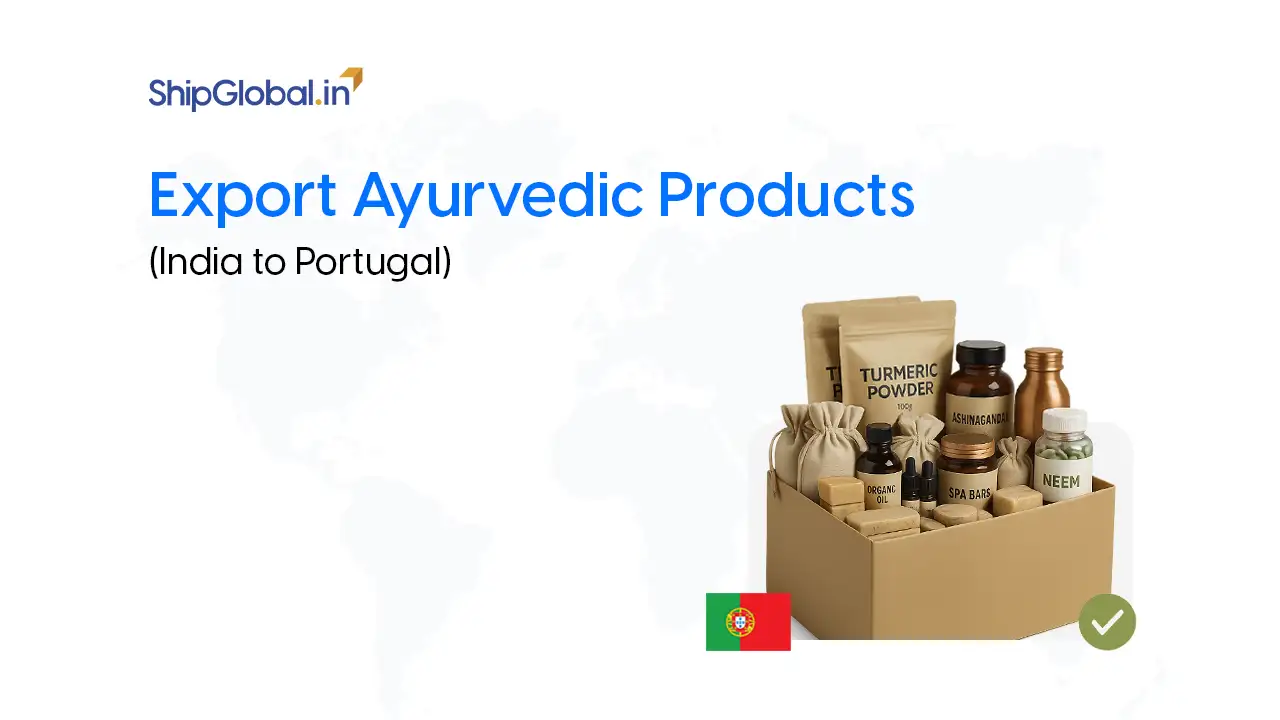Black Friday is one of the largest shopping holidays in the year, and every November, exporters prepare to conduct this occasion. It began as an American retail frenzy but today has become a worldwide sale that has been shaping the purchasing habits of Europe, the Middle East, and even India.
To Indian exporters to Europe or the U.S., Black Friday is a golden chance to exploit the demands of the international market. However, there is one more complication: more orders also imply increased logistics expenses and delivery timeframes, as well as an intense rivalry.
How do you maintain your profit margins on exports during the black Friday when the export costs are on the rise?
The solution can be found in a single clever plan, that is, shipment bundling among the exporters.
What Exactly is Shipment Bundling for Exporters
Simply, shipment bundling involves consolidation of export orders in order to save. Exporters can make several small packages separately and combine them into one large shipment to the same region or distribution center.
Consider it as carpooling, you do not have to spend money on buying several cars to get to the same destination but you fill in one car and divide the payment.
Such is precisely what multi-order consolidation shipping does to the exporters: it lowers the per-unit freight costs and makes the management of logistics easier.
Bundling is not only available to large exporters. This technique can be employed by small and medium businesses (SMEs) to access the optimization of logistics costs and make global sales more lucrative.
1. The Cost Advantage: Logistics Cost Optimization
The biggest reason exporters embrace bundling is logistics cost optimization. When you combine orders, your cost per shipment unit drops drastically.
Here’s how bundling directly impacts your bottom line:
- Reduced Freight Charges – Freight carriers offer discounted rates for bulk shipments. The more volume you move, the better your international freight discounts.
- Lower Handling Costs – One large shipment is easier and cheaper to process than ten small ones.
- Reduced Customs Fees – Fewer entries mean lower brokerage and clearance charges.
- Optimized Delivery Costs – Bulk shipments can be routed to regional hubs, lowering overall last-mile delivery challenges.
2. Shipping Container Optimization: Maximize Every Inch
💸 Unlock Big Savings with Smart Shipping
🚚 Option A: Split Shipments
🔸 5 separate shipments
🔸 50kg each @ ₹2,000
💥 Total = ₹10,000
High cost. No synergy. 💸
📦 Option B: One Bulk Shipment
✅ 1 combined 250kg shipment
✅ Cost drops by 20–30% per kg
🎯 Save ₹2,000–₹3,000+
Efficient. Scalable. Profit-smart. 💡
In case your exports are shipped by sea, then optimization of shipping containers is important. Every cubic foot of your container is a precious real-estate. Unoccupied spaces signify wastage of money.
Here’s how you can optimize:
Visualize the space used with container-loading software or three-dimensional modeling software.
- Move the heavy and light items in strategic positions.
- Use pack boxes that are stackable and standardized boxes to maximize space.
- Send out coordinated deliveries to suppliers in order to share containers (a fantastic step to small exporters).
The advantages of this process are not just financial as it saves money, but also enhances global sale events logistics because you do not have to manage and monitor as many containers.
3. Faster Customs Clearance During the Sales Season
The customs offices all over the world become overwhelmed during high sales seasons such as Black Friday and Cyber Monday.
The whole procedure of the clearance of customs during the sales season can turn into a nightmare provided you have to send several small packages and each has its own paperwork.
Consolidated or bundled shipments make this step much more simple:
- You send a single set of the documents as opposed to multiple ones.
- It is less likely to lose paperwork or invoices that do not match.
- Professionally run shipments that are larger will clear the customs more quickly.
In the case of exporters in India that are shipping their goods to the U.S. or Europe, collaborating with a freight forwarder with experience in cross-border eCommerce Black Friday operations can assist in making the process of clearance easier and faster last-mile delivery.
4. Warehouse and Fulfillment Planning: The Unsung Hero
Bundling strategy can or cannot work in your warehouse and fulfillment planning. More effective bundling begins at your warehouse.
🚚 Here’s How to Make It Work
🏬 Use Your Warehouse as a Consolidation Centre
Receive smaller shipments from suppliers, package them by destination, and consolidate them into larger shipments for savings and efficiency.
🧠 Leverage a Good WMS (Warehouse Management System)
A reliable WMS helps monitor stock, automatically group orders, and prevent errors or mix-ups — keeping operations smooth and smart.
📦 Anticipate Sales Drops & Spikes
Events like Black Friday can cause unpredictable demand. Pre-pack and pre-route shipments to major regions to stay ahead and deliver on time.
The presence of a separate space in your warehouse that is used to ship multi-orders by consolidation would be a sure way not to lose anything should demand surge.
5. Tackling Last-Mile Delivery Challenges
The problem of last mile delivery during Black Friday intensifies dramatically – imagine streets with traffic jams, fewer delivery times, and clogged courier networks.
Exporters can overcome this by:
- Before the sale, send bulk shipments to local fulfillment centres in target countries.
- Collaborate with 3PL (third-party logistics) firms that focus on regional distribution.
- Provide local delivery/ pickups using eCommerce sites.
Such approach facilitates the reduction of expenses, reduction of delays, and customer satisfaction, at the same time preserving your export profit margins Black Friday season.
6. Multi-Order Consolidation Shipping: A Game-Changer
Multi-order consolidation shipping takes bundling one step further. Instead of consolidating at the warehouse level, exporters collaborate with logistics providers to combine multiple customer orders that share the same destination route.
🌍 Collaborative Shipping = Shared Savings
For example, if several Indian sellers have orders bound for Germany, their goods can be merged into one consolidated container.
This strategy benefits everyone involved with international freight discounts and faster transit times — a win-win for cost and speed.
This approach is increasingly popular among cross-border eCommerce Black Friday sellers who rely on platforms like Amazon, eBay, or Shopify.
7. Global Sale Event Logistics: Plan Early, Ship Smart
Preparation is the secret of succeeding in the global sale event logistics.
Exporters that book early in the freight space, warehouse space, and arrange meetings with the customs agents beat those who procrastinate at the end.
The following is a brief list of Black Friday export preparedness:
Forecast demand early. Take historical data of past years to come up with predictions of what will sell most.
- Pre-book the freight capacity of a book. The rates increase drastically when the sale is near.
- Interact with buyers and logistics partners. Announce schedules and schedule slippage.
- Have a contingency plan. Never forget to allow a buffer time on customs or carrier delays.
Note: the sooner your products are delivered, the more time you have to deliver them via the final mile delivery and local delivery before the demand of customers reaches the maximum.
8. Real-World Example: Indian Exporters to the U.S.
Suppose that you are an Indian exporter to the U.S. and you are selling handmade leather bags. On the Black Friday, you anticipate 500 or more orders made by various customers in the various states of the U.S.
- You can ship each order as a separate shipment instead of shipping all the orders right out of India.
- Combine all orders into one air or sea shipment to a fulfillment partner in the U.S.
- Make use of the warehouse of that partner to sort out and ship individual orders nationally.
Result? You save up to 40% of international shipping expenses, save custom documents, and ship goods faster whilst you increase your profit margins on exports.
💡 Keep in mind: The sooner your products reach the market, the more time you’ll have for last-mile delivery and neighborhood fulfillment when demand is at its highest.
Final Thoughts: Bundle Smarter, Export Better
With the eCommerce world of cross-border expanding at a pace, it is necessary that exporters change with the aim of maintaining healthy margins.
Exporter shipment bundling is not some hack but long-term optimization of logistics costs and facilitation of the global sale event logistics, as well as customer satisfaction.
This is to say that on this Black Friday, don’t merely concentrate on offering discounts to your customers, but also concentrate on discounts on your shipping invoices.
You will also know how to consolidate export orders to save money, how to maximize containers, and how to make the fulfillment process as efficient as possible and then you will remain profitable no matter how intense the selling season can be.
Efficiency is the new coinage in international commerce and shipment bundling is your most lucrative exchange rate.
⚠️ Note: The sooner your goods are received, the more time you have to handle last-mile delivery and complete local fulfillment before customer demand hits its peak.
FAQs
Shipment bundling means consolidating multiple small export orders into one large shipment going to the same region or destination. It helps exporters save on freight, customs, and handling costs while improving logistics efficiency.
No. Small and medium exporters (SMEs) can also benefit from bundling. By pooling shipments with other exporters or consolidating their own smaller orders, SMEs can access bulk rates and improve cost efficiency.
Container optimization means using every cubic inch of a shipping container efficiently. Proper packing, stacking, and use of standardized boxes prevent wasted space — which translates directly into reduced freight costs and better logistics efficiency.
Consolidated shipments require fewer sets of documents and fewer customs entries. This reduces paperwork, minimizes the risk of errors or mismatches, and accelerates the clearance process — especially during peak seasons like Black Friday.
Multi-order consolidation allows multiple exporters shipping to the same route or destination to combine their orders into one container. It reduces costs, improves transit time, and ensures better logistics coordination — especially useful during Black Friday when freight capacity is tight.







